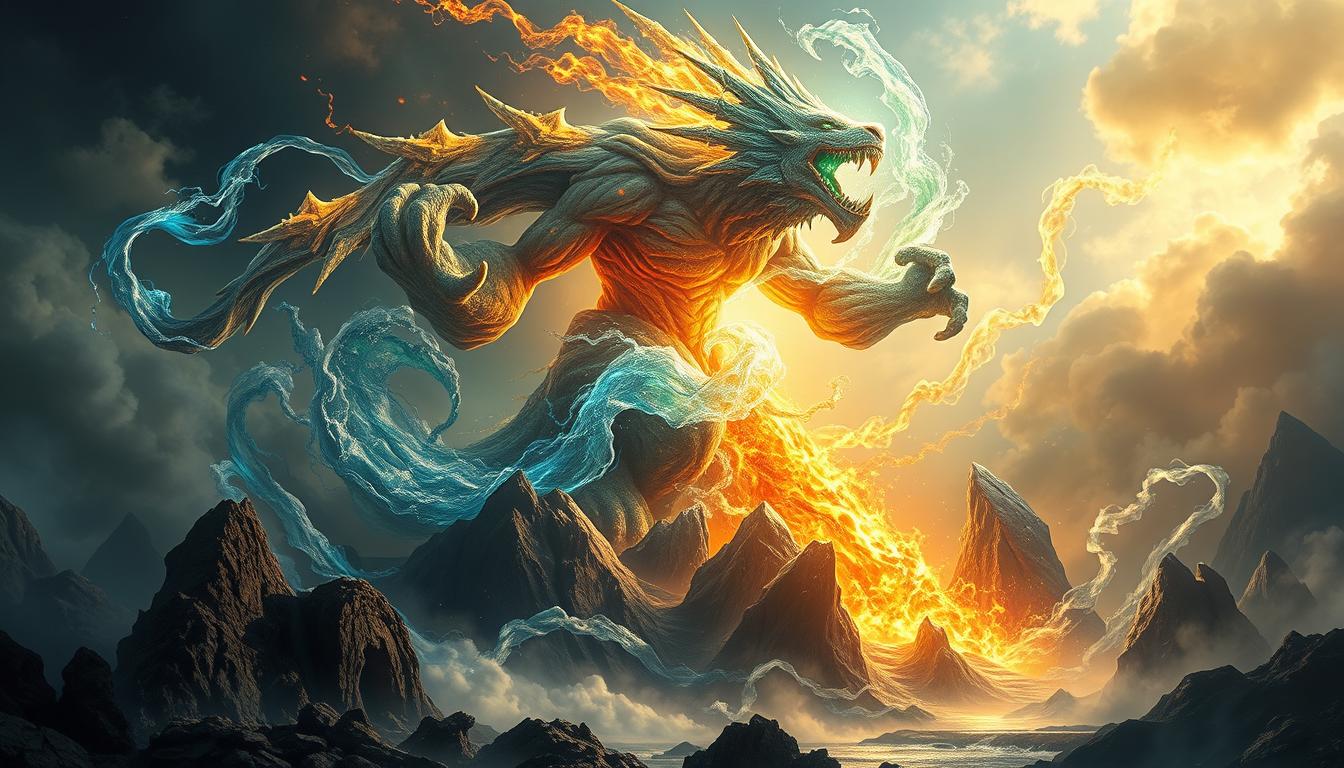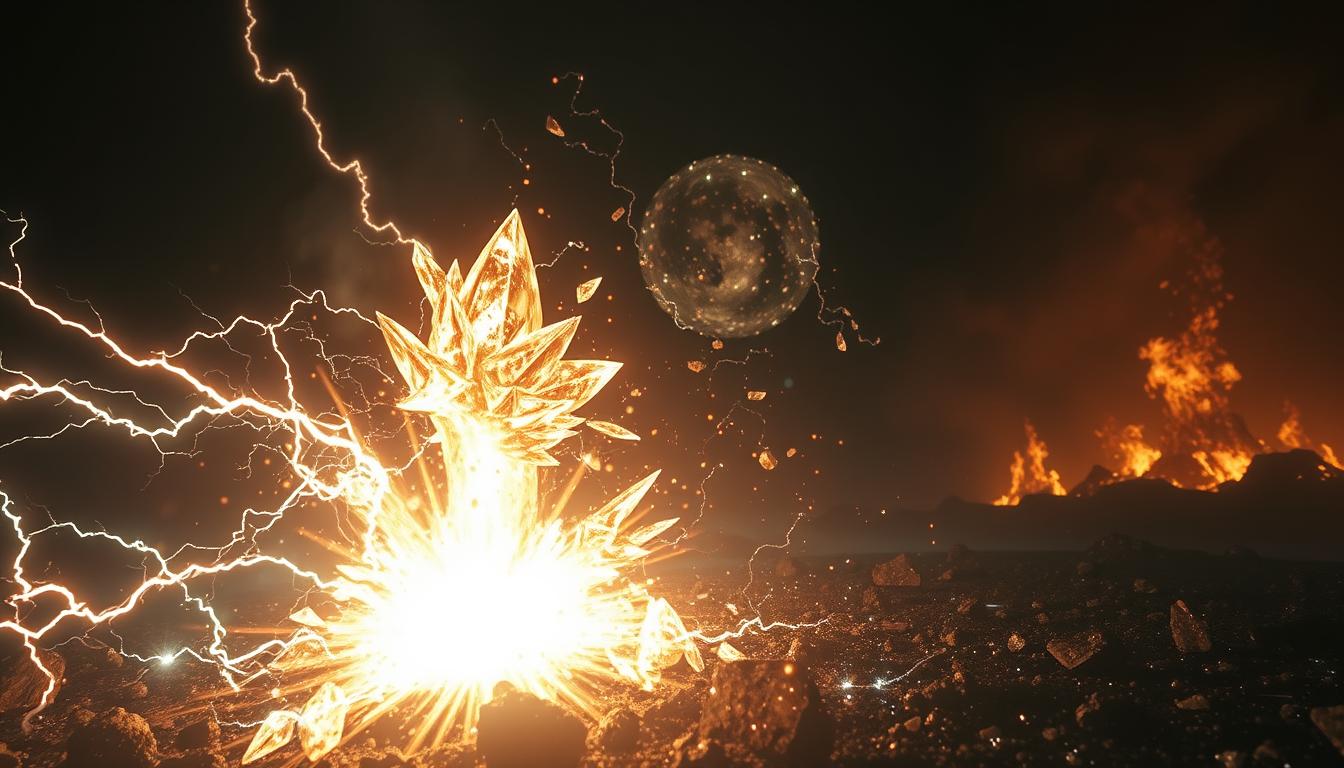Elemental Bane 5e: My Ultimate Guide Inside

I’ll give a plain-English breakdown of the spell, the exact levers that matter at the table, and why I often bring it online at 4th level. You’ll get my turn-by-turn choices, common mistakes, and simple checks I run before I pick a target.
I also preview the classes on my list that can sling the spell, which creature types I prioritize, and why timing the first proc each turn is the secret sauce. I’ll reference official Wizards Coast pages where it helps, but I keep the focus on winning combats and protecting concentration.
Key Takeaways
- This guide shows how I use the spell to strip resistances and amplify party damage.
- I explain the key table levers and when to cast at 4th level.
- You’ll see playstyle notes for each class that can use the effect.
- Timing the first proc each turn is often more important than raw damage.
- I include practical checks and common mistakes to avoid during play.
Elemental Bane 5e: The Essentials I Use Every Session
I explain the mechanics I trust most, and how a single cast reshapes a round of combat. I focus on the actionable pieces I check before I spend a 4th‑level slot.
What it does: I pick a damage type and a visible target within 90 feet. The target rolls a Constitution save. On a failed save, for up to 1 minute (concentration) the first time each turn it takes that type of damage it takes an extra 2d6 and loses any resistance to that type.

Core mechanics at a glance
- Level & school: 4th‑level Transmutation on the Artificer, Druid, Warlock, and Wizard list.
- Casting: 1 action with V, S components—plan your hands and voice.
- Upcast: at 5th level+ add one extra target per slot level; chosen creatures must be within 30 feet of each other.
| Feature | Value | Why it matters | Source |
|---|---|---|---|
| Range | 90 feet | Keeps you safe while tagging frontline threats | XGtE / PotA |
| Components | V, S | Vulnerable to counterspell or silencing effects | wizards coast page |
| Damage types | acid, cold, fire, lightning, thunder | Pick what your party will hit repeatedly | Jeremy Crawford notes / rules text |
| Duration | Up to 1 minute (concentration) | Plan cover and reactions to keep it alive | XGtE pp.148-149 |
How I Cast and Optimize This Spell in Real Games
When I cast this spell in a live session, I treat it like a surgical tool: precise, timed, and aimed at the biggest resistance or damage bottleneck. I only spend a 4th‑level slot if my team can trigger the effect repeatedly over several rounds.

Choosing the right target and timing against creatures with resistance
I open on a creature that actually has the resistance I want removed. If none do, I still target whoever my party will hit with the same damage type each round.
Watch for high Constitution saves or Legendary Resistances. I bait those out first with lesser checks, then cast so the main save matters.
Picking the damage type based on party composition and enemy traits
I match the damage type to my party. If our artificer favors lightning, I pick lightning. If the team is heavy on fire, I call fire.
- Pro tip: announce the chosen type so allies fire that type first each round.
Class-specific notes: warlock, wizard, druid, and artificer use cases
As a warlock I sit behind cover and keep concentration while teammates deal steady hits. A wizard pairs it with like‑typed cantrips or follow-up area spells. As a druid I coordinate because many druid spells need my concentration. As an artificer I sync with gadget attacks for instant payoff.
Action economy, range bands, and positioning within 90 feet
It costs one action to cast, so the cast spell is worth it only if the party can trigger the bonus each round. Stay inside 90 feet, pick angles that let allies hit without drawing aggro, and front‑load defenses to protect concentration for up to a minute.
| Decision | Why it matters | Quick tip |
|---|---|---|
| Target choice | Removes resistance or gains 2d6 | Pick repeatable sources |
| Damage type | Maximizes party synergy | Call the type aloud |
| Positioning | Protects concentration | Use cover and ask for peel |
Advanced Tactics, Combos, and Rulings to Know Right Now
I lean on timing and party setup to turn one cast into constant extra dice every round. That focus lets me treat the effect as long-term value, not a single burst.
Party synergies: I stack it with consistent blasters. A sorcerer spamming fire bolts or a tempest cleric pushing lightning turns the bonus into repeatable damage. On artificer and wizard turns I line up cantrips or infused attacks to guarantee the proc each round.

What it doesn’t do: resistances vs. immunities and table rulings
It removes resistance but cannot beat immunity. If a creature is immune to a chosen damage type, I pick another type or a different control option.
Watch the “first time each turn” ruling: it applies on enemy turns too. That means reactions and opportunity attacks can trigger the extra damage across multiple turns in a round.
Source trail and print appearances
I cite the rules in Xanathar’s Guide to Everything (pp. 148–149, 155) and Princes of the Apocalypse (p. 235) when questions pop up. Official printings are by Wizards Coast, and I note any Jeremy Crawford comments that clarify timing or interaction.
| Feature | Why I care | Quick tip |
|---|---|---|
| Damage type choice | Maximizes party follow-ups | Call the type aloud to sync hits |
| Multi-target upcast | 30‑foot spacing at cast time matters | Confirm allies can hit all tagged creatures |
| Resistance vs immunity | Only removes resistance | Swap type if immunity blocks value |
Conclusion
To finish, I share a short checklist that turns planning into repeatable damage at the table. Use this guide as your quick reference for on‑the‑spot choices.
I treat the spell as a setup: pick a type your team can deliver every round and target the right creature. The first‑time‑each‑turn trigger and the extra dice from the damage chosen add up fast.
I only cast when concentration seems safe. In boss fights it often pays off. If the battlefield is chaotic, save the slot and avoid the risk.